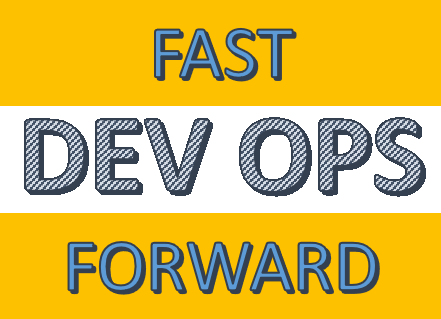Search the Community
Showing results for tags 'devops services'.
-
Have you ever experienced the sinking feeling of dread when your once-smooth DevOps pipeline begins to slow down? In DevOps, speed and efficiency are holy grail for smooth running pipelines. It's an invisible force behind the continuous delivery, rapid deployments and happy customers. But alas, even the most streamlined pipelines aren’t immune to the occasional hiccups. Enter the dreaded bottlenecks – those pesky little roadblocks. These roadblocks can bring your deployments to a halt and leave you feeling like your stuck. This comprehensive guide will help you in navigating and tackling the bottlenecks. We’ll delve into the common challenges that create the resistance in your pipelines explore the techniques to identify and fix these bottlenecks. At the end of the blog, you will possess the expertise to optimize your DevOps best practices effectively. Understanding the Impact of Bottlenecks To understand this better imagine a six-lane highway which converts into a single lane, you can imagine the chaos. This can serve as the perfect analogy for a bottleneck within your DevOps pipelines. Things will be inevitably slow at the bottleneck point, no matter how much traffic you throw at pipeline. These delays can be manifested in several ways: Extended Lead Times It is important to notice that bottlenecks can significantly increase the time it takes to deliver the features from the concept to MVP and MVP to production. This can lead to the unhappy stakeholder, missed deadlines and can create a competitive disadvantage. Reduced Team Productivity When the developers and operations personnel get jammed from waiting on the pipeline to clear. This will lead to the decreased productivity & demoralization of the team. Higher Risk Errors Reducing bottlenecks urgently could force people to take short cuts, which increases the likelihood that mistakes will find their way into the production system. Inefficient Resource Utilization Resources upstream of a bottleneck are frequently underutilized as a result of it, whereas resources downstream are overworked in an attempt to keep up. The impact of bottlenecks in the DevOps pipelines is undeniable. Leverage the true potential of DevOps pipeline by identifying and solving the DevOps bottlenecks. Common Bottleneck Culprits of DevOps Pipeline Bottlenecks have the tendency to manifest at any stage within your DevOps pipeline, often secretly obstructing progress and inducing delays. Below is an overview of several dominant sources of bottleneck occurrences. Code Testing For code quality, unit tests, integration tests and other quality checks are essential. But what happens when an excessively long or poorly optimized tests are there? This will significantly slow down the pipeline. Imagine having a number of complex tests that takes at least an hour to run. This will lead to the major bottleneck which is tickling as time bomb. Build Processes Using inefficient build tools, having complex dependencies between the modules, or lack of the caching mechanism. All these can lead to the lengthy build time. Remember, that every minute that is spent waiting is the minute wasted. Infrastructure Provisioning Manual infrastructure is a time-consuming and error-prone process. Slow server maintenance or configuration issues can cause bottlenecks, holding up deployments. In the hands-on world, manual processes are challenges waiting to be automated. Security Checks Security is the important for any pipeline. But overly rigorous ssecurity checks integrated late in the pipeline can be the reason for the significant delays. It is important to remember that even though security is important but it should always be integrated efficiently. Manual Deployments The traditional deployments often involve manual steps that can sometime leads to risky rollbacks, that can be time-consuming and error prone. These manual interventions can lead to bottlenecks, which can be easily bypassed with the help of automation. This is not a deep list, but it gives you the highlights to some of the most common areas where the DevOps Bottlenecks can arise. By understanding these spots you’re on the way to identify & eliminate these kinds of roadblocks from your pipelines. Techniques for Identifying Bottlenecks Once you have an idea of where to look and identify the bottlenecks, it becomes way much easier. Here are some of the important techniques that can be used to shed light on these invisible bottlenecks. Pipeline Monitoring Dashboards Most DevOps tools are equipped with the visual dashboards that track performance of each stage in your pipeline. These dashboards can be helpful in pinpointing bottlenecks. As they often display metrics like stage of execution, time taken in execution and length of queues. By keeping tracks of these dashboards, you can proactively identify potential issues before they can cause any major troubles. Code Analysis Reports Code analysis tools can help in identifying inefficiencies of your code base, which can lead to testing challenges. These Pipeline monitoring tools can analyze code complexity, identify duplicate pieces of code, and find improvement areas. By handling these passive tasks, you can simplify your code and potentially reduce the time it takes to run a test. Performance Profiling Tools These Performance profiling tools go deeper into the inner workings of your manufacturing process, analyzing runtime for various steps. By identifying the most time-consuming steps in your construction process, you can pinpoint areas that need improvement and eliminate construction design bottlenecks. Log Analysis Logs generated at some stage in your pipeline can prove to be a data treasure. By analyzing pipeline logs, you could observe habitual mistakes that can cause slow execution. Identifying these patterns can help you pinpoint bottlenecks and troubleshoot issues. If your team lacks the expertise to decipher these logs effectively, consider to hire DevOps developers with experience in pipeline optimization and monitoring. Fixing Bottlenecks with Precision: Best Practices Now that you have tools and techniques to identify the bottlenecks. Let’ see how you can mitigate these challenges. Here are some strategies for different bottlenecks: Code Testing Bottlenecks Use code review to catch bugs early Perform unit tests carefully to focus on important areas Investigate parallel testing framework to run the test concurrently Build Process Bottlenecks Reduce code dependencies with code refactoring Use caching techniques for common libraries or modules Consider using quick build tools or optimizing build configurations Infrastructure Provisioning Bottlenecks Use Infrastructure as Code (IaC) tools such as Terraform or Ansible for automated and repeatable projects Take advantage of the self-scaling features offered by the cloud to meet shifting demands Pre-configure the infrastructure with the necessary configuration to avoid delays during deployment Security Checks Bottlenecks Integrate security testing early in the pipeline to catch the pipeline bottlenecks in the early stage Initiate security scans where possible Use security-focused IaC tools to apply security best practices from the start Deployment Bottlenecks Look for blue-green deployments or canary deployments for low-risk rollouts In turn, use feature flags to control the appearance of new features Automatic rollback procedures provide rapid recovery in the event of a problem Optimizing for Peak Performance: A Checklist for Pipeline Optimization If you think that fixing the bottlenecks will help your pipeline to run smoothly? You’re highly mistaken! It’s just one piece of the puzzle. Here’s how you can keep your DevOps pipelines running smoothly: Continuous Integration (CI) Regularly integrate code changes to identify and fix bugs early in the lifecycle and prevent the delays later in the pipeline. Infrastructure as Code (IaC) Ensure consistent and effective deployments by automating and standardizing infrastructure provisioning. Pipeline Monitoring To proactively spot possible bottlenecks before they cause disruptions, continuously check the performance of your pipeline. Conclusion A well-designed DevOps pipeline represents the foundation of successful software delivery. It facilitates rapid deployment and raises a productive and satisfied development team. Hardware detection and repair systems ensure smooth operation, allowing for quick, trouble-free deliveries. To achieve this ideal environment, continuous pipeline monitoring, following the best practices, and knowledge sharing among DevOps professionals are required.
-
Containerization boosts DevOps by enabling consistent and portable application packaging across environments. Security concerns exist, but misconceptions like inherent container safety can lead to vulnerabilities. Best practices cover secure communication, data leakage prevention, and compliance. Secure communication with TLS, mutual TLS, and HTTPS. Data leakage prevention with employee training, zero-trust, encryption, and isolation. Compliance with data sovereignty and regulations through access control, encryption, and auditing. Read More on Secure DevOps Services.
- 1 reply
-
- devops trends
- devops services
-
(and 1 more)
Tagged with:
-
Introduction In the fast-paced world of software development, agility and efficiency are paramount. The need to deliver high-quality applications rapidly while maintaining a seamless user experience has given rise to the DevOps methodology. DevOps, an amalgamation of development and operations, is not just a cultural shift but a transformative approach that bridges the gap between development and IT operations. At the heart of this transformation are DevOps services companies, playing a pivotal role in enabling organizations to embrace this methodology and stay ahead in the competitive digital landscape. Understanding DevOps Services Companies DevOps services companies are specialized firms that offer expertise, tools, and solutions to help businesses adopt and implement the DevOps methodology effectively. They understand the challenges associated with traditional development and deployment approaches and work towards streamlining processes, fostering collaboration, and automating repetitive tasks. These companies provide a range of services tailored to the unique needs of their clients, facilitating the entire DevOps lifecycle – from planning and coding to testing, deployment, monitoring, and continuous improvement. Key Services Offered Consultation and Assessment: DevOps services companies begin by assessing the current development and operations processes of their clients. This involves identifying bottlenecks, inefficiencies, and areas for improvement. They provide recommendations and a roadmap to implement DevOps practices effectively. Infrastructure Automation: Infrastructure as Code (IaC) is a fundamental principle of DevOps. DevOps services companies help organizations automate the provisioning and management of infrastructure, reducing manual errors and ensuring consistency across environments. Continuous Integration and Continuous Deployment (CI/CD): CI/CD pipelines automate the build, testing, and deployment of code changes. DevOps services companies design and implement CI/CD pipelines that enable rapid and reliable application delivery. Containerization and Orchestration: Containers, such as Docker, and orchestration tools, like Kubernetes, have revolutionized application deployment and scaling. DevOps services companies assist in containerizing applications and managing them using orchestration tools for scalability and resilience. Monitoring and Analytics: Continuous monitoring is essential to identify performance bottlenecks and potential issues. DevOps services companies integrate monitoring tools that provide real-time insights into application health, enabling proactive issue resolution. Security Integration: Security is a critical aspect of DevOps. DevOps services companies integrate security practices throughout the development lifecycle, ensuring that applications are built with security in mind. Culture and Collaboration: DevOps is not just about tools; it's a cultural shift that emphasizes collaboration between development and operations teams. DevOps services companies help foster this culture of collaboration and communication. Benefits of DevOps Services Companies Faster Time-to-Market: By automating processes and reducing manual interventions, DevOps services companies enable businesses to release new features and updates faster, giving them a competitive edge. Improved Quality: Continuous testing and integration ensure that code changes are thoroughly tested, leading to fewer bugs and improved overall software quality. Enhanced Collaboration: DevOps services companies break down silos between development and operations teams, promoting collaboration and knowledge sharing. Efficient Resource Utilization: Automation and infrastructure as code lead to optimized resource utilization, reducing costs and improving scalability. Higher Customer Satisfaction: With quicker response times to issues and faster feature releases, customer satisfaction is likely to improve. Conclusion In the digital age, where innovation drives success, DevOps services companies play a pivotal role in helping businesses adapt and thrive. By embracing the principles of DevOps, organizations can achieve higher agility, efficiency, and quality in their software development processes. DevOps services companies provide the expertise and solutions necessary to navigate the complexities of this methodology, making them invaluable partners in the journey toward streamlined, collaborative, and customer-centric software development.
-
Forum Statistics
73.3k
Total Topics71.2k
Total Posts
.png.6dd3056f38e93712a18d153891e8e0fc.png.1dbd1e5f05de09e66333e631e3342b83.png.933f4dc78ef5a5d2971934bd41ead8a1.png)




